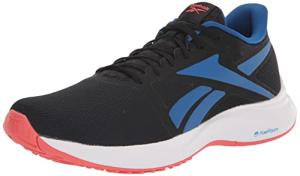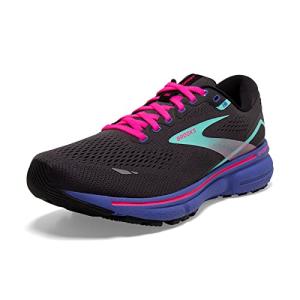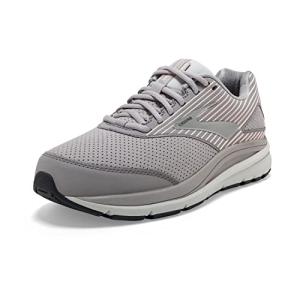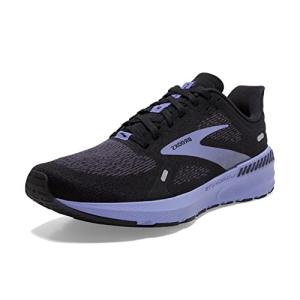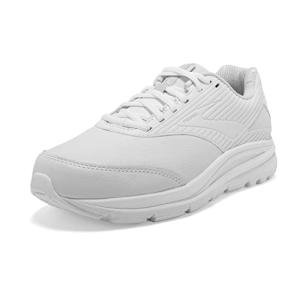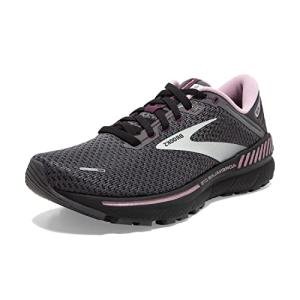"Running for Beginners: Avoid These Rookie Errors"
Starting to run can be exciting, but it's easy to make mistakes. Many new runners push too hard or ignore their body's signals. These errors can lead to injuries or burnout.

Avoiding common pitfalls can help new runners stay safe and enjoy their workouts. Simple steps, such as warming up, choosing the right shoes, and pacing yourself, make a significant difference. Taking care of your body with proper nutrition and rest is also key.
Learning from others' experiences can speed up your progress. Joining a running group or talking to more seasoned runners provides valuable tips. This way, you can sidestep common mistakes and focus on improving your skills.
Key Takeaways
- Proper gear, form, and pacing prevent injuries and burnout
- Consistency and gradual progress lead to long-term success
- A balanced approach includes rest, nutrition, and cross-training
Setting Realistic Goals
New runners often aim too high too fast. Smart goal-setting keeps you motivated and helps prevent injuries. It's key to start small and build up over time.
Understanding Your Fitness Level
Know where you're starting from. If you've never run before, don't expect to run a 5K right away. Try a 1-minute run, 2-minute walk pattern for 20 minutes. Repeat this 3 times a week.
As you get stronger, increase your running time. Aim to run for 5 minutes straight after a few weeks. Then 10 minutes. Small wins add up fast.
Listen to your body. If you feel pain, slow down or take a break. It's normal to be a bit sore, but sharp pains are a warning sign.
Creating Achievable Milestones
Break big dreams into small steps. Want to run a 5K? Start with a 1K fun run. Then move up to a 2K, then 3K, and so on.
Set time-based goals too. Try to run for 15 minutes without stopping. Then 20 minutes. Then 30. This builds stamina over time.
Track your progress. Use a running app or a simple notebook. Write down how far and how long you run each time. Seeing improvement keeps you going.
Celebrate every win, no matter how small. Ran your first mile? That's huge! Reward yourself with new running socks or a healthy treat.
Choosing the Right Gear

Proper gear is key for new runners. Good shoes, suitable clothes, and helpful accessories make runs more comfortable and enjoyable.
Selecting Proper Running Shoes
Running shoes are the most important piece of gear. Visit a specialty running store for a proper fitting. Staff can analyze your foot type and gait to recommend the best shoes.
Look for shoes with good cushioning and support. Try on several pairs and walk or jog in them to see which one feels most comfortable. The right shoes should feel comfortable from the start.
Replace running shoes every 400-500 miles. Worn-out shoes lose cushioning and can lead to injuries.
Appropriate Clothing for Different Weathers
Dress for the weather, but remember you'll warm up while running. In cold weather, wear layers you can remove. Choose moisture-wicking fabrics to stay dry.
For hot weather, wear light-colored, loose-fitting clothes. A hat or visor helps shade your face.
In rain, a lightweight water-resistant jacket keeps you dry. Avoid cotton, which gets heavy when wet.
The Importance of Hydration Packs and Gadgets
Stay hydrated on longer runs with a water bottle or hydration pack. Hand-held bottles work well for shorter distances. Waist packs or backpacks are better for longer runs.
A running watch or smartphone app can track your distance, pace, and time. This helps monitor progress and stay motivated.
Consider wearing reflective gear or using a headlamp for running in low-light conditions. Safety should always be a top priority.
Mastering Proper Form

A good running form helps prevent injuries and enhances performance. Focus on your posture, technique, and breathing to run more efficiently and comfortably.
Running Posture and Technique
Keep your head up and eyes forward. Relax your shoulders and arms, letting them swing naturally. Stand tall with a slight forward lean from the ankles. Land midfoot or forefoot, not on your heel. Aim for short, quick strides rather than long ones.
Count your steps for one minute while running at an easy pace. Try to increase this number gradually over time. A good target is 160-180 steps per minute. This faster cadence reduces impact on your joints.
Practice proper form during every run, even when you're tired. Begin with short distances and gradually increase them. Running hills can help strengthen your muscles and improve your technique.
Breathing Strategies While Running
Breathe from your belly, not your chest. This deep breathing uses your full lung capacity. Try to breathe in for 2-3 steps and out for 2-3 steps. This rhythm helps you stay relaxed and focused.
If you feel out of breath, slow down or take walk breaks. It's normal for new runners to mix running and walking. As you become fitter, you'll be able to run for longer without needing to stop.
Some runners find it helpful to breathe in through the nose and out through the mouth. Others prefer breathing only through the mouth. Try both ways to see what feels best for you.
Building Consistency

Consistency is key for new runners to improve and reach their goals. A regular schedule and clear objectives help establish good habits and maintain motivation.
Developing a Regular Running Schedule
Pick 3-4 days a week to run. Start with short 15-20 minute runs. Gradually increase time and distance as fitness improves.
Space out run days to allow for recovery. For example, run Monday, Wednesday, and Saturday.
Try to run at the same times each week. This helps form a habit. Early morning or after work often works well for many people.
Add variety to keep things interesting. Mix up routes and terrain. Include hills, trails, and flat paths.
Setting Short-term and Long-term Running Goals
Set a realistic short-term goal, like running a 5K in 3 months. Break this down into weekly targets.
Week 1: Run 1 mile without stopping Week 4: Run 2 miles continuously Week 8: Complete a 25-minute run
Long-term goals keep you motivated. Examples:
- Finish a 10K race within 6 months
- Run 3 times per week for a full year
- Improve 5K time by 2 minutes in one year
Write goals down and track progress. Use a running app or journal. Celebrate small wins along the way.
Adjust goals as needed. Be flexible if life gets busy or progress is slower than expected.
Understanding Nutrition and Hydration

Proper nutrition and hydration are key for new runners. Eating the right foods and drinking enough water helps boost performance and prevent issues during runs.
Fueling Before, During, and After Runs
Eat a light meal 2-3 hours before running. Good options include oatmeal, a banana with peanut butter, or yogurt with granola. These provide energy without causing stomach upset.
For runs over 60 minutes, take in carbs during the run. Energy gels, sports drinks, or small snacks, such as raisins, work well. Aim for 30-60 grams of carbs per hour.
After running, eat a mix of carbs and protein within 30 minutes. This helps muscles recover. A smoothie, chocolate milk, or sandwich are good choices.
Plan regular meals and snacks throughout the day. This helps maintain stable energy levels for training.
Hydration Essentials for Runners
Drink 16-20 ounces of water 2-3 hours before running. Have another 8-10 ounces 20-30 minutes before starting.
During runs, drink 3-6 ounces every 15-20 minutes. Water is fine for runs under an hour. For longer runs, use sports drinks to replace electrolytes.
After running, drink 16-24 ounces of fluid for every pound lost during exercise. Weigh yourself before and after to check fluid loss.
Daily hydration matters too. Aim for pale yellow urine as a sign of good hydration. Carry a water bottle to sip throughout the day.
Incorporating Strength Training

Strength training is key for new runners. It builds muscle, prevents injury, and boosts speed. Adding weights to your routine can take your running to the next level.
Exercises to Enhance Running Performance
Focus on exercises that target the muscles used for running. Squats work your quads and glutes. Lunges boost leg strength and balance. Deadlifts strengthen your hamstrings and lower back.
Try calf raises to power your push-off. Planks and Russian twists build core strength. This helps maintain good form during long runs.
Don't forget upper body work. Push-ups and rows improve arm swing and posture.
Aim for 2-3 strength sessions per week. Start with bodyweight exercises. Add weights as you get stronger.
Balancing Strength Work and Running
Plan strength training around your runs. Do it after easy runs or on rest days. This lets your body recover between hard workouts.
Start with 15-20 minutes of strength work. Increase time and intensity slowly. Listen to your body to avoid overtraining.
Mix up your routine. Try circuit training one day and use heavier weights the next. This keeps things fun and challenges your muscles in new ways.
Remember to warm up before lifting. Cool down and stretch after. This helps prevent soreness and injury.
Be patient. It takes time to see results. Stick with it, and you'll soon notice an improvement in your running performance.
Learning to Listen to Your Body

Paying attention to physical signals helps runners avoid injury and improve performance. Tuning into your body's cues allows you to adjust training as needed.
Recognizing Signs of Overtraining
Watch for these red flags:
- Persistent fatigue
- Decreased performance
- Mood changes
- Trouble sleeping
- Frequent illness
If you notice these signs, reduce your training intensity or volume. Take an extra rest day or two. Reduce mileage by 20-30% for a week.
Pay attention to how your legs feel. Are they constantly sore or heavy? This may mean you need more recovery time between runs.
The Importance of Adequate Rest and Recovery
Rest days are key for allowing your body to adapt and get stronger. Aim for at least 1-2 rest days per week.
Sleep is crucial for recovery. Most runners need 7-9 hours nightly. Poor sleep can lead to fatigue and injury risk.
Active recovery like gentle yoga or walking can boost blood flow and ease soreness.
Proper nutrition and hydration support recovery. Eat a balanced meal with protein and carbs after runs. Drink water throughout the day.
Listen to pain. Sharp or persistent pain means stop running and see a doctor if it doesn't improve.
Preventing Common Running Injuries
Proper preparation and care can help new runners avoid painful setbacks. Taking the time to warm up, cool down, and address common issues like blisters can help you run comfortably.
Warm-up and Cool-down Routines
Start each run with 5-10 minutes of light jogging or brisk walking. This increases blood flow to muscles and loosens joints. Follow with dynamic stretches like leg swings and lunges.
After running, walk for 5 minutes to gradually lower your heart rate. Then do static stretches, holding each for 30 seconds. Focus on calves, quadriceps, hamstrings, and hip flexors.
A proper cool-down helps remove lactic acid and reduces muscle soreness. It also improves flexibility over time.
Dealing With Blisters and Chafing
Blisters form when friction between the skin and socks or shoes occurs. To prevent them, wear moisture-wicking socks and shoes that fit well. Apply petroleum jelly to blister-prone areas before runs.
For existing blisters, use blister pads or a Moleskine to reduce friction. Don't pop blisters, as this can lead to infection.
Chafing occurs when skin rubs against skin or clothing. Apply anti-chafing balm to problem areas. Wear snug, seamless clothing made of technical fabrics that wick sweat away from skin.
Cross-Training for Runners
Cross-training helps runners boost fitness and prevent injuries. It adds variety to workout routines and targets different muscle groups.
Benefits of Diverse Workouts
Cross-training makes runners stronger and more well-rounded. It builds overall fitness while giving running muscles a break. This can help reduce the risk of overuse injuries.
Cross-training improves cardio fitness in new ways. Activities like swimming or cycling work the heart and lungs without the impact of running. This lets runners build endurance more safely.
It also fixes muscle imbalances. Running works some muscles more than others. Cross-training targets neglected areas, creating a more balanced body. This can improve running form and efficiency.
Recommended Cross-Training Activities
Many activities work well for runners who cross-train. Cycling is a top choice. It builds leg strength and cardio with low impact. Swimming is another great option. It provides a full-body workout and improves breathing.
Strength training is key for runners. It builds muscle strength and helps prevent injuries. Yoga enhances flexibility and balance. This can lead to better running form.
Other good choices include:
- Rowing
- Elliptical machines
- Cross-country skiing
- Hiking
Runners should pick activities they enjoy. This makes cross-training fun and increases the chance they'll stick with it.
Evaluating Progress and Adjusting Your Plan
Tracking your running journey and making smart changes are key to success. Regular check-ins help you stay on track and improve steadily.
Tracking Workouts and Mileage
Keep a running log to record your workouts and mileage. Write down the date, distance, time, and how you felt after each run. This helps spot patterns and areas for improvement.
Use a fitness app or smartwatch to easily track your runs. These tools can show your pace, heart rate, and route.
Review your log weekly to track your progress. Notice if you're running farther or faster than before.
When to Level Up Your Training
Increase your mileage by 10% each week if you feel up to it. This slow build-up helps prevent injuries.
Add one harder workout per week after running for 4-6 weeks. This could be hills, speed work, or a longer run.
Listen to your body. If you feel tired or sore, take an extra rest day. It's better to be cautious than to push too hard and get hurt.
Try a new running route or join a local running group to keep things fresh. New challenges can boost your motivation and skills.
Joining a Runners' Community
New runners often overlook the benefits of joining a running group. These communities offer support, motivation, and valuable advice.
Local running stores frequently organize group runs. These events cater to all skill levels and provide a great opportunity to meet fellow runners.
Online forums and social media groups are another option. They allow runners to connect, share experiences, and get tips from more experienced members.
Running clubs often host regular meetups and training sessions. These gatherings can help newcomers improve their form and learn proper techniques.
Many communities organize charity runs or races to raise funds. Participating in these events can give new runners a sense of purpose and accomplishment.
Group runs can make longer distances feel more manageable. Having others around can distract from fatigue and make the experience more enjoyable.
Safety is another benefit of running with others. Groups are more visible to traffic and can provide assistance if someone gets injured.
Some runners worry about keeping up with a group. Most communities welcome all paces and often have multiple pace groups to choose from.
Joining a runners' community can turn a solitary activity into a social one. It's a great way to make new friends who share similar interests and goals.
Frequently Asked Questions
New runners often have many questions as they start their journey. These answers cover key points about training, injury prevention, pacing, and nutrition.
What are the common mistakes to avoid when training for my first 10k?
Beginners should avoid increasing mileage too quickly. A good rule is to up weekly distance by no more than 10% at a time.
Skipping rest days is another mistake. Rest allows the body to recover and adapt to training.
How can I prevent injuries as a new runner preparing for a race?
Proper shoes are crucial for injury prevention. Visit a specialty running store for a fitting.
Gradual progress in training helps avoid overuse injuries. Listen to your body and don't push through pain.
What should I know about pacing when running my first long-distance event?
Start slow and finish strong. Many new runners go out too fast and burn out early.
Practice pacing during training runs. Use a GPS watch or smartphone app to track speed.
How important is a proper warm-up and cool-down in a running routine?
Warm-ups prepare the body for exercise. A 5-10 minute light jog or brisk walk works well.
Cool-downs help the body transition back to a state of rest. Light stretching after a run can improve flexibility.
What kind of diet or nutrition is recommended for someone new to running?
A balanced diet rich in fruits, vegetables, and lean proteins supports running.
Proper hydration is key. Drink water throughout the day, not just during runs.
How often should a beginner incorporate rest days into their running schedule?
Most beginners benefit from one to two rest days per week. This allows for recovery and prevents burnout.
Rest days can include light activities, such as walking or yoga. Complete rest is also fine.
Reebok Men's Runner 5.0 Shoe, Black/Orange/Blue, 9.5
Elevate your running game with the Reebok Men's Runner 5.0 Shoe in Black/Orange/Blue, size 9.5
Product information
$65.00 $41.86
Product Review Score
4.86 out of 5 stars
167 reviewsProduct links
Brooks Ghost 15 Women's Running Shoe, Black/Blue
Step into comfort and style with the Brooks Ghost 15 designed for your running needs
Product information
$139.95
Product Review Score
4.15 out of 5 stars
126 reviews
